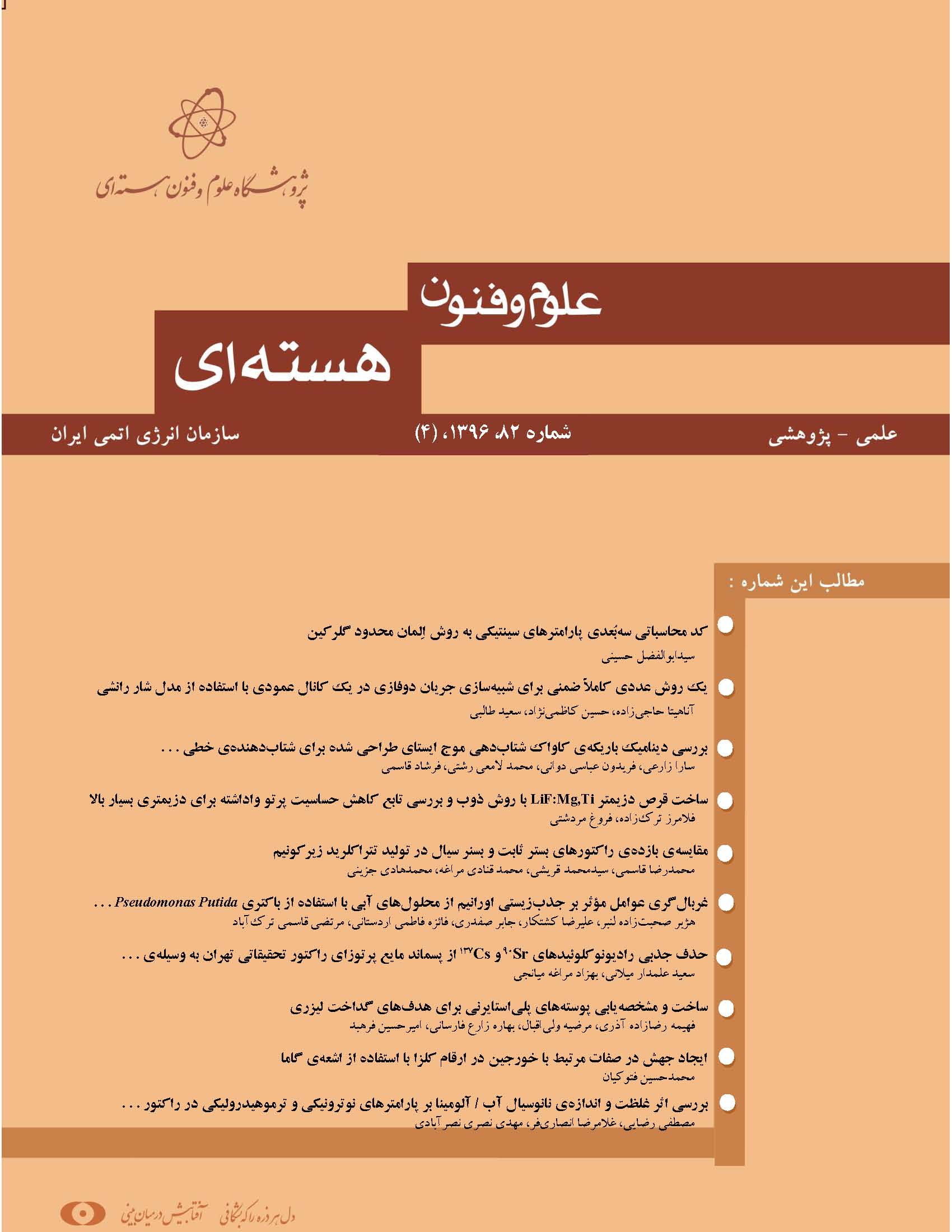نوع مقاله : مقاله پژوهشی
نویسنده
دانشکدهی مهندسی انرژی، دانشگاه صنعتی شریف
چکیده
در این مقاله، توسعهی کد کامپیوتری GFEM-KIN-3D به منظور محاسبهی پارامترهای سینتیکی گزارش میشود. برای این منظور، در ابتدا معادلهی پخش نوترون مستقل از زمان و الحاقی آن در هندسهی سهبُعدی با استفاده از روشاِلمان محدود گلرکین حل میشود. در ادامه، از طریق وارد کردن توزیع شار نوترونی و الحاقی آن در رابطهی مربوط به اختلال، کسر مؤثر نوترونهای تأخیری و مدت زمان متوسط تولید نوترونها محاسبه میشود. مشکل اصلی در راستیآزمایی این پروژه، عدم وجود مسئلهی آزمون است که شامل دادههای مربوط به کسر نوترونهای تأخیری، طیف نوترونهای آنی و طیف نوترونهای تأخیری باشد. بنابراین، به ناچار چند مسئله طراحی، و پارامترهای سینتیکی برای آنها محاسبه شد. با توجه به اینکه حل معادلهی پخش نوترون در سهبُعد با استفاده از مسائل آزمون معتبر راستیآزمایی شد و رابطهی اختلال نیز یک رابطهی کاملاً مشخص دارد، بنابراین با اطمینان میتوان گفت در صورت داشتن اطلاعات کافی میتوان پارامترهای سینتیکی را با دقت خوبی محاسبه کرد. کد کامپیوتری توسعه داده شده GFEM-KIN-3D قابل استفاده در محاسبات قلب راکتور با هر شکل هندسی اعم از راستگوش و ششگوش است.
کلیدواژهها
عنوان مقاله [English]
3D Computational Code for Calculation of Kineric Parameters Based on Galerkin Finite Element Method
نویسنده [English]
- S. A Hosseini
چکیده [English]
In the present paper, development of the Galerkin Finite Element Method-Kinetic-3 Dimentional (GFEM-KIN-3D) computational code for the calculation of the kinetic parameters is reported. To this end, the static neutron diffusion and corresponding adjoint equations are solved using Galerkin Finite element method in the 3 dimensional geometry. Then, the calculated neutron and adjoint flux distributions are used in the perturbation theory to calculate the effective delayed neutron fraction and mean generation time of the neutrons. There is no benchmark problem that includes the information such as the delayed neutron fraction, prompt and delayed neutron spectrum. Therefore, some problems were designed by the author and the kinetic parameters were calculated for the considered problem. Since the neutron diffusion solver was previously validated against the well-known benchmark problems and the equations of perturbation theory is available, we conclude that if the required information is known, the kinetic parameters will be calculated with high accuracy. The developed GFEM-KIN-3D is applicable to the core calculation of the both hexagonal and rectangular reactor cores.
کلیدواژهها [English]
- Neutron Flux
- Adjoint Flux
- Tetrahedral Elements
- Effective Delayed Neutron Fraction
- Mean Generation Time of the Neutrons

